Jasmina Metwaly – Alexander Skorobogatov – Diana Ejaita – Pınar Öğrenci

Opening with book launch on 4 July 2024, from 7pm
Exhibition: 5 July – 4 August
open by appointment: mailto@after-the-butcher.de or on whatsapp/facetime: +49 178 3298 106
Jasmina Metwaly – Alexander Skorobogatov – Diana Ejaita – Pınar Öğrenci

Opening with book launch on 4 July 2024, from 7pm
Exhibition: 5 July – 4 August
open by appointment: mailto@after-the-butcher.de or on whatsapp/facetime: +49 178 3298 106
Haure Madjid, Neda Saeedi
with echoes by Jessica Ekomane and Samuel Baah Kortey
Opening: Thursday, 30 May from 7 pm
Finissage: Sunday June 30, 3-6pm
Exhibition 31 May until 30 June 2024
open by appointment: mailto@after-the-butcher.de
and +49 178 3298106



















Patrik Thomas, Valério de Araújo Silva, Anna Scherbyna, Anna Sopova, Michalina Musielak & Aya Ganor, Dana Kavelina
Sunday afternoon finissage
May 26, from 3-6pm
at 5:00pm sharp live music intervention by Johann Bärenklau (drone/music concrète)
open by appointment: mailto@after-the-butcher.de
or +49 178 3298 106
The exhibition ‘Patterns of Seeing and Not Seeing’ presents works by Meisterschüler*innen of the expanded cinema class at the Academy of Fine Arts Leipzig (HGB). The exhibition includes video works, installations and drawings. In their works, the artists address questions about the production of visible and invisible patterns that define how we see. How can we create images that question these patterns? How can the act of seeing be transformed from an exploratory gaze to a gaze of resistance?
The works discuss self-images and forms of emancipation through the camera lens, a self-organised film project in Portugal or the GDR gaze in Tanzania. Another installation deals with the sound of surveillance, while another video is on contemporary interpretations of the image of Nefertiti (Nofretete). Private … utopian … politicised … embodied & redirected patterns.
Patterns of Seeing and Not Seeing presents works by Patrik Thomas, Valério de Araújo Silva, Anna Scherbyna, Anna Sopova, Michalina Musielak & Aya Ganor, Dana Kavelina. Expanded cinema class is headed by Prof. Clemens von Wedemeyer and Mareike Bernien, PhD. Link: / http://excine.net/

after-the-butcher, showroom for contemporary art and social issues, Spittastr. 25, 10317 berlin, www.after-the-butcher.de
Mobil: +49 178 3298106, mailto@after-the-butcher.de
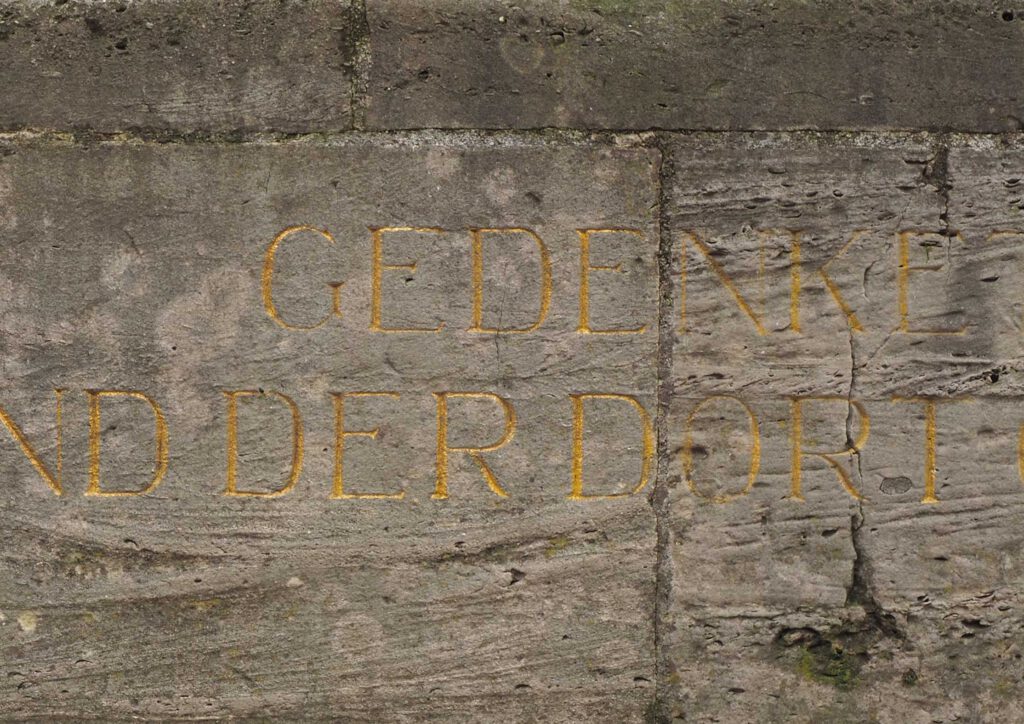
“Apartheid was legal. The Holocaust was legal. Slavery was legal. Colonialism was legal. Legality is a question of power, not justice.”
Jose Antonio Vargas
(from Emila Roig, Why We Matter, Aufbau-Verlag 2021)
after the butcher, exhibition space for contemporary art and social issues cordially invites you to a discussion event with
Kerstin Stakemeier, Anike Joyce Sadiq, Thomas Locher and Helmut Draxler.
The discussion will take place in the context of our current exhibition by Anike Joyce Sadiq and Thomas Locher.
The works of both artists deal with elementary questions of law – Anike Joyce Sadiq in the context of German colonialism, Thomas Locher in the context of war and the question of whether soldiers may be labelled as potential murderers.
Both works are highly topical in politically polarised times. They develop a concrete concept of law as an elementary pillar of the power of the state. And they make it clear that this pillar is not static, but in constant motion and development: what is right and wrong is a question of the balance of power between us, the forces of society and the forces of the state.
The exhibition is open Sunday 7 April from 3-6pm
The discussion starts at 4 pm
Exhibition: March 2 – April 7, 2024
open by appointment: +49 1783298106
or mailto@after-the-butcher.de
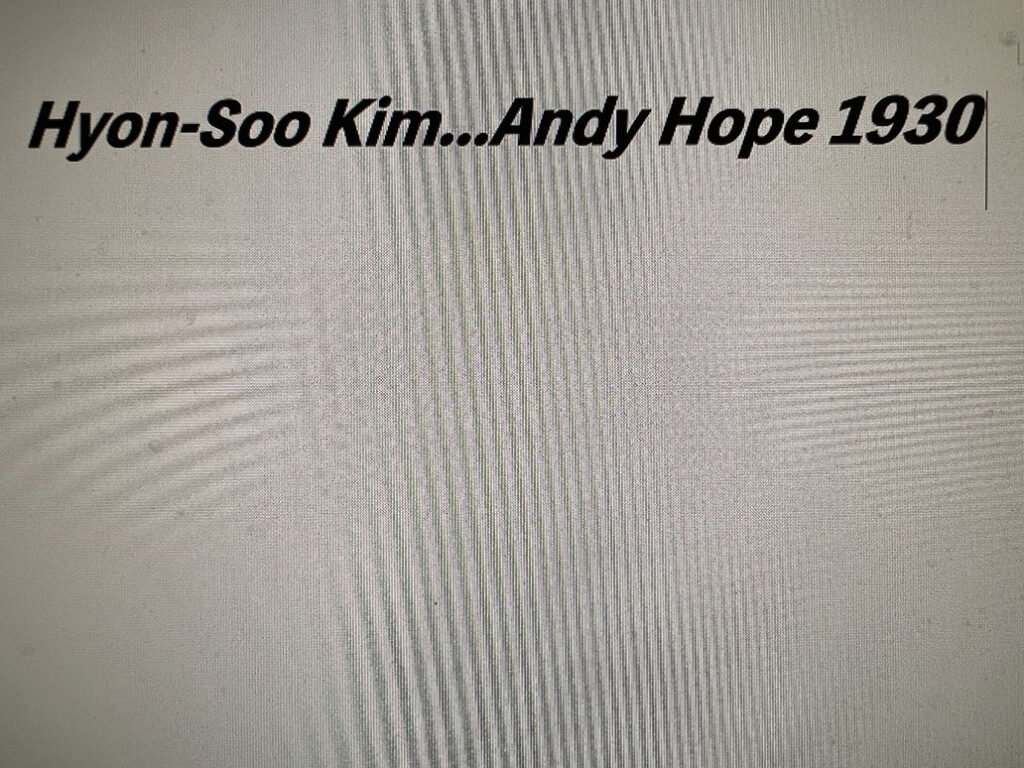
after the butcher – showroom for contemporary art and social issues, cordially invites you to the opening of this exhibition
Friday 19 January from 7 pm
Exhibition 20 January – 18 February 2024
open by appointment: mailto@after-the-butcher.de
or +49 178 3298 106
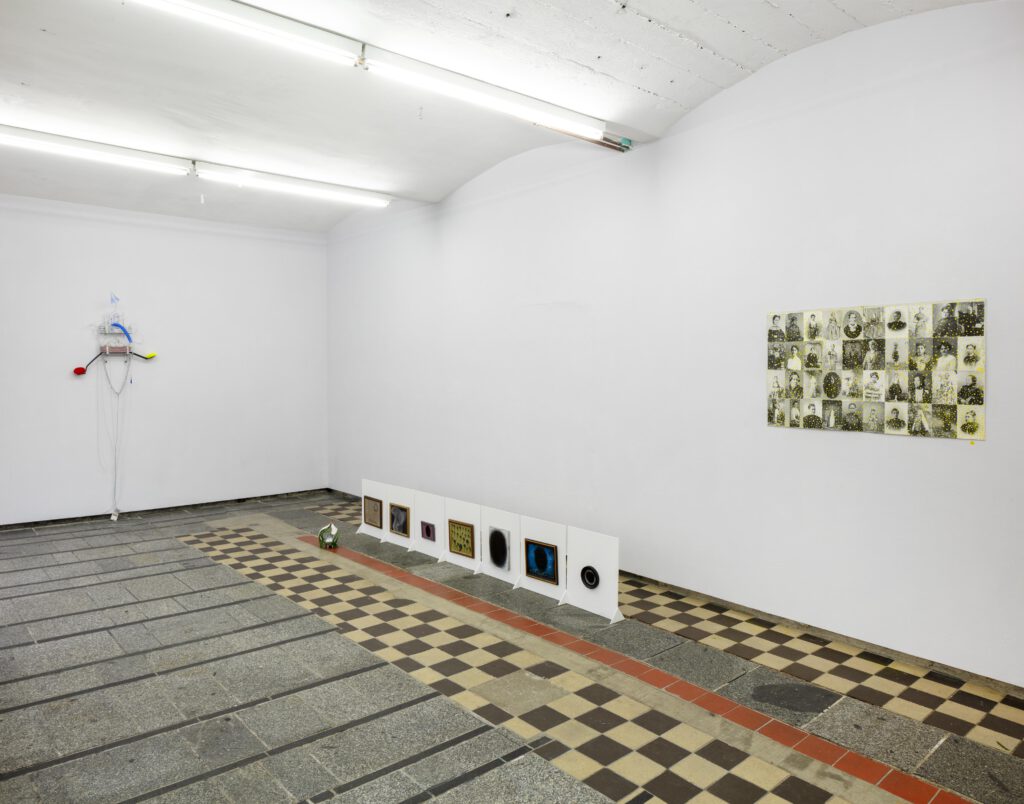
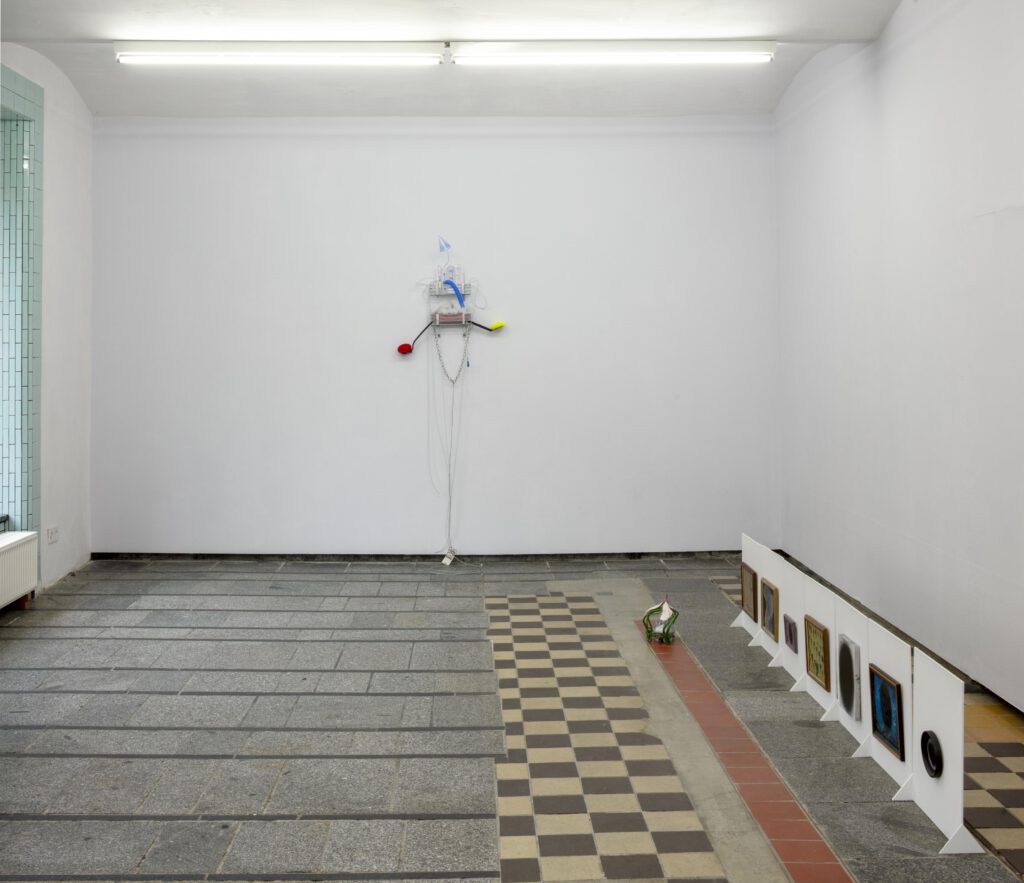
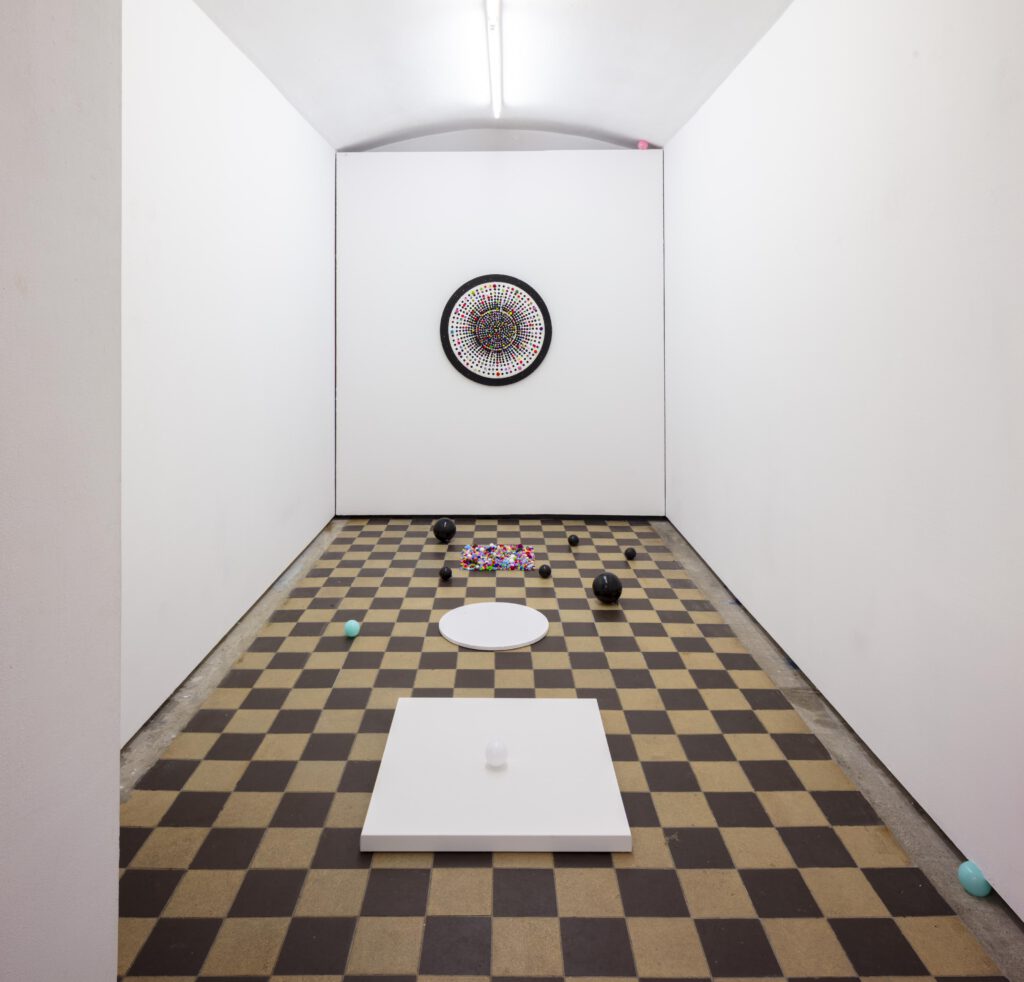
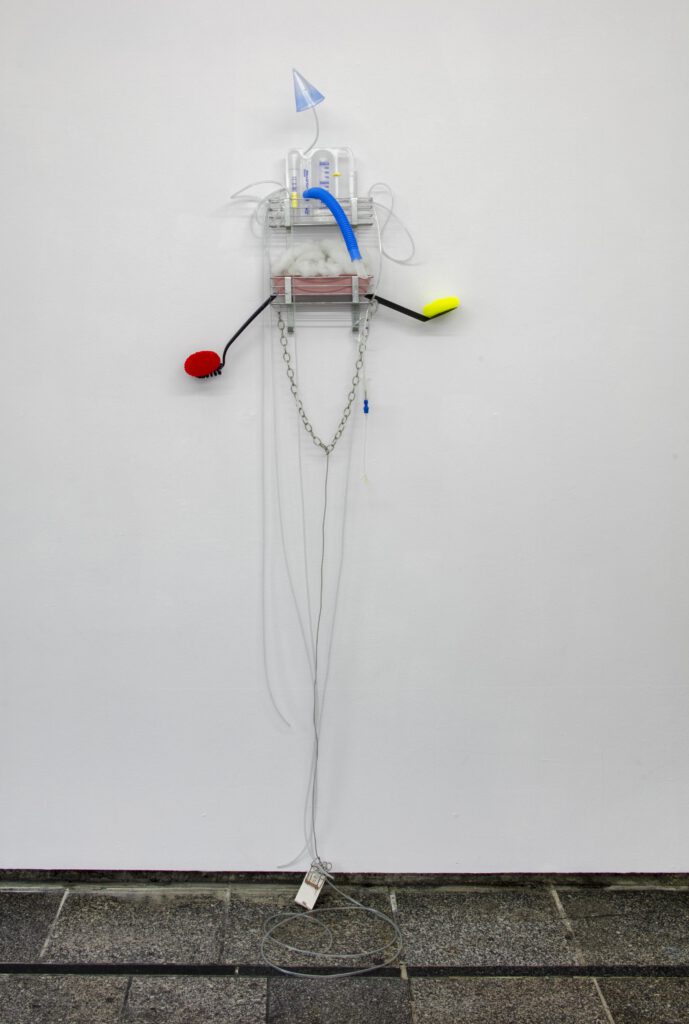
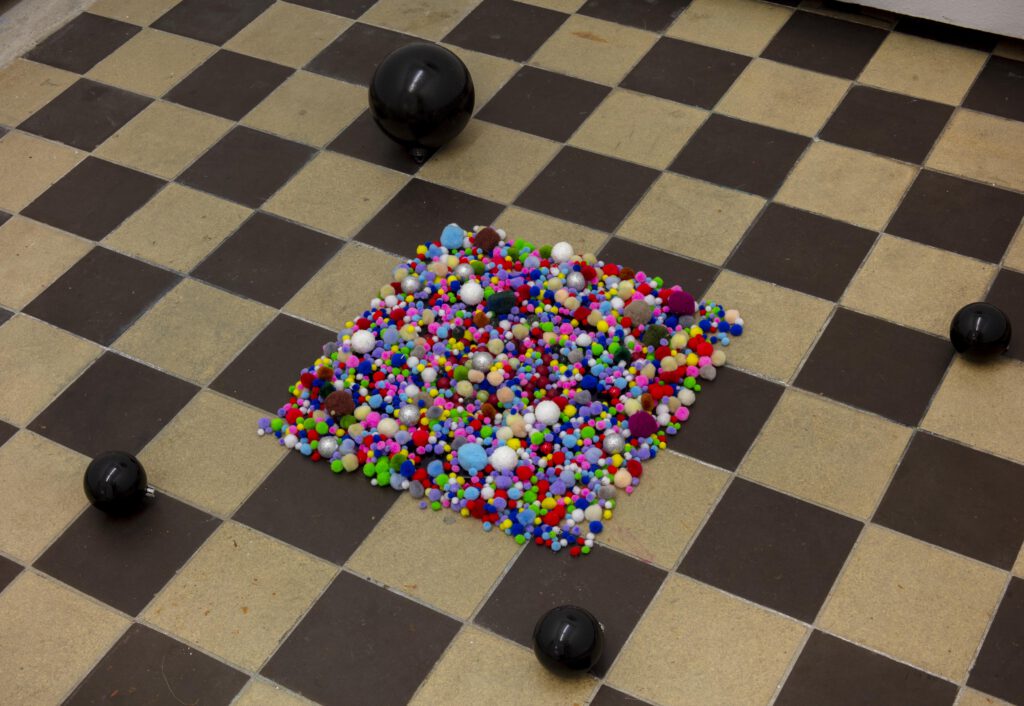
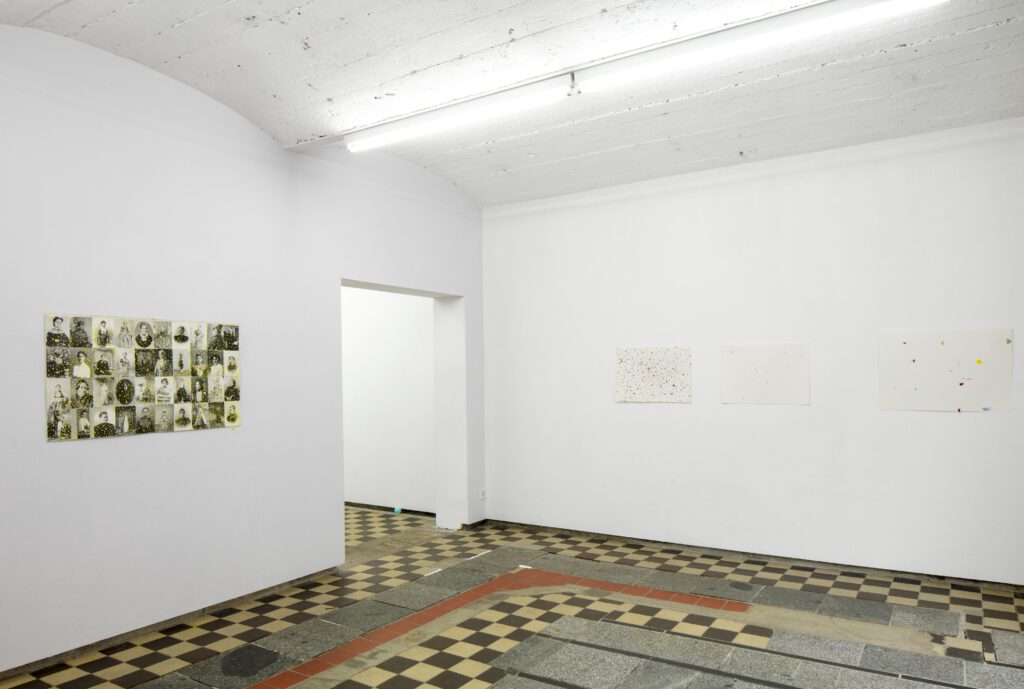
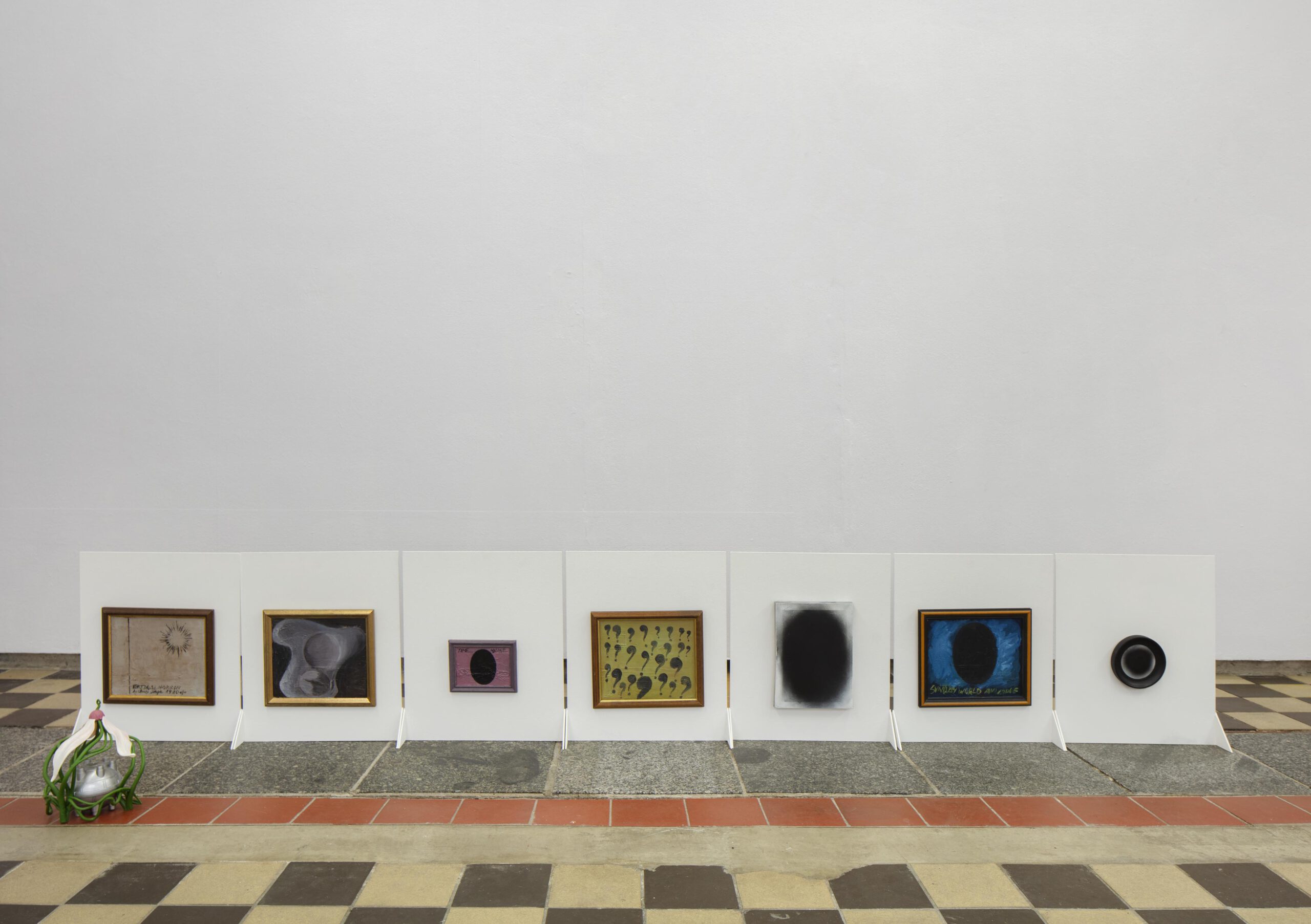
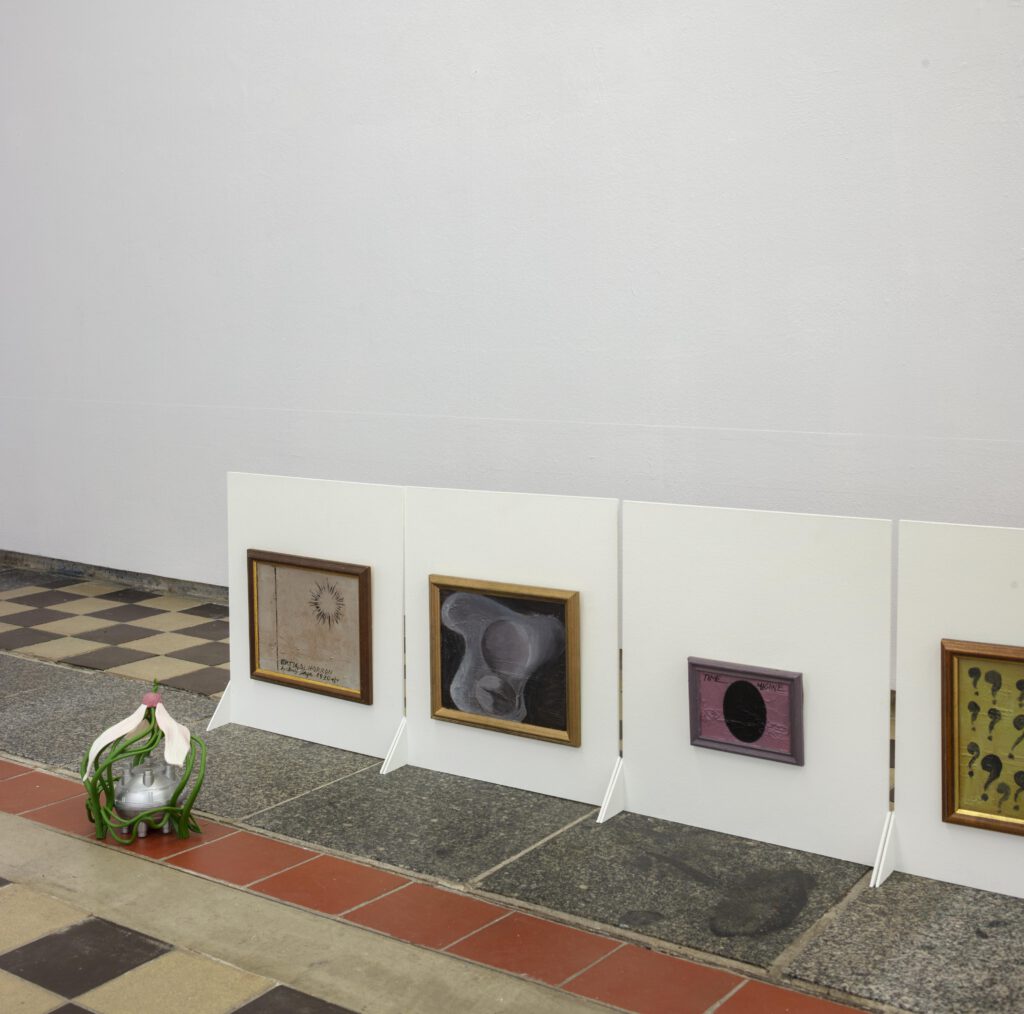
Ute Waldhausen + Jan Molzberger
Finissage: Sunday, 14 January – 3-6pm
5pm Concert with Robert Schalinski, Ute Waldhausen and some voices
Exhibition: 9 December, 2023 – 14 January, 2024
open by appointment: mailto@after-the-butcher.de
or: +49 178 32 98 106
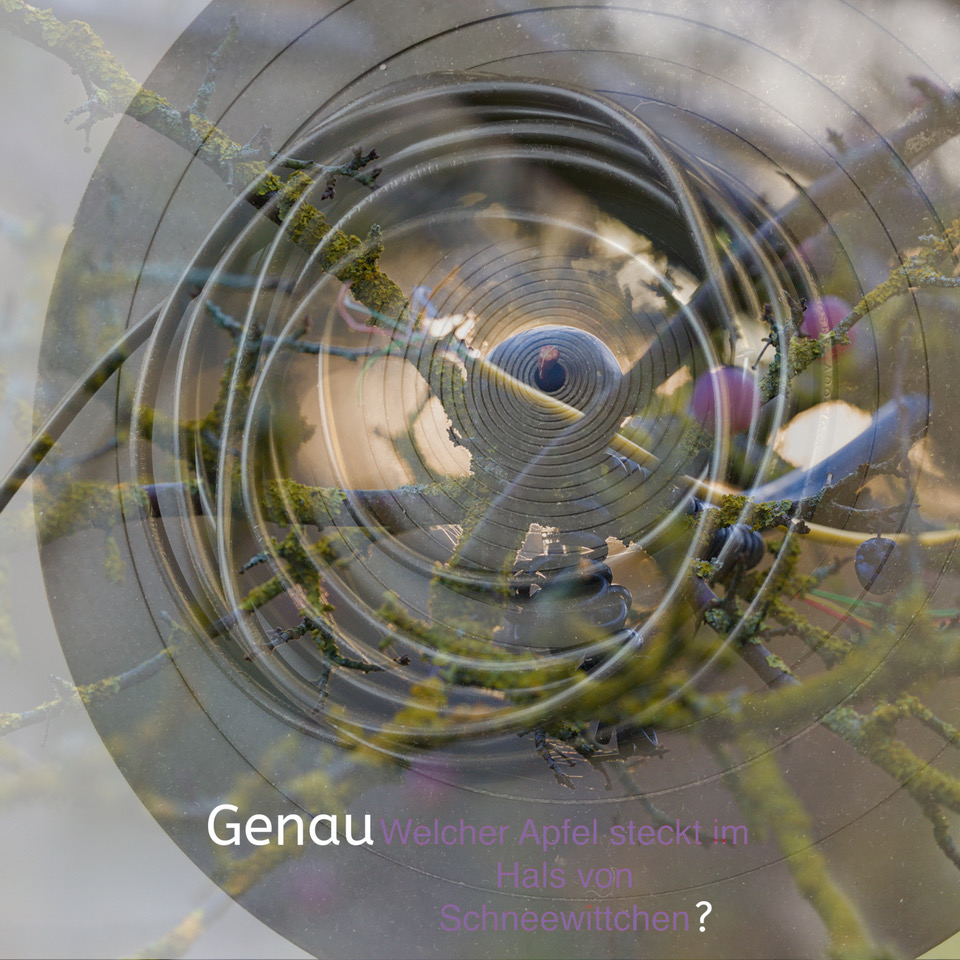
Questions to Autonomy in the Year 24.000
We are in paradise.
In a gay paradise. No more trans bodies comparing themselves to countries in theory. Theory no longer exists, nor does what was called human once.
The gay paradise no longer needs Eve. The apple is an apple again, you can eat it or leave it.
Eve is now a tree, an android tree, with cables in her spinal cord that have long since given up the ghost. Nothing flows here anymore, her back is no longer a back, but an open landscape with a blue background.
Everything feminine there has de-formed into signal-dead details. Her spinal cord is now floating space.
We are in outer space. A universe without sexual events.
A water bong flies by, a body of smoke, an object of intoxication. Without an interest of consumption.
We would float in this space if we would still exist. We could reach for the glass body and inhale. And get twisted afterwards.
There are objects that are like short stories, without a beginning or an end. They seem dystopian and therefore always out of place. Displacement is an elementary question of autonomy,
as it seems so displaced within the networks of collectivization. Bound to human cords.
Do apples know about their neighbours on the tree,
do they feel how they develop in form and colour,
how they surrender to the given circumstances?
Do they envy the pears, are they autonomous? Do they have a goal?
Do they notice when you walk past them, do they like it when you see them, pick them up, eat them, compost them, photograph them?
Apples fly through space. They are not altered in any way. They are autonomous beings that do not speak, but are.
They fly, just as they were hanging on the tree, same constellation just tree-less.
The water bong cannot fly through them.
The apple formation forms an autonomous shield.
They move towards zero, while the jar with the cables moves towards one.
Spatial performance.
What we are about to see has never been shown or seen before. It is unique and limited to a short time only.
If you go there, you will experience the universe.
You can fly, but only in your imagination.
You will move through a space that does not exist,
that passes by and perhaps touches something.
You will hear something, you will see rotations and a lot of installed stillness where something has moved through once.
It’s a museum in a gay universe. In which we still find flying apples and comments on the wall.
People do things, people whose names have three letters. They don’t share these letters.
Everyone has a different one.
There is an A, an E, a J, a U, an N and a T like expensive, thoughtful, awkward, jubilant, extreme and different. All letters have experienced some time and have made decisions and yet they are sometimes not fully aware of themselves.
They walk a lot and they are happy to be. They like to watch while walking.
They collect while watching while walking. They like to be with themselves. They are autonomous.
So is the space they will give to us.
Form and life.
In response to autonomy in the 24th millennium.
(pour Jacques)
Text: Nine Budde
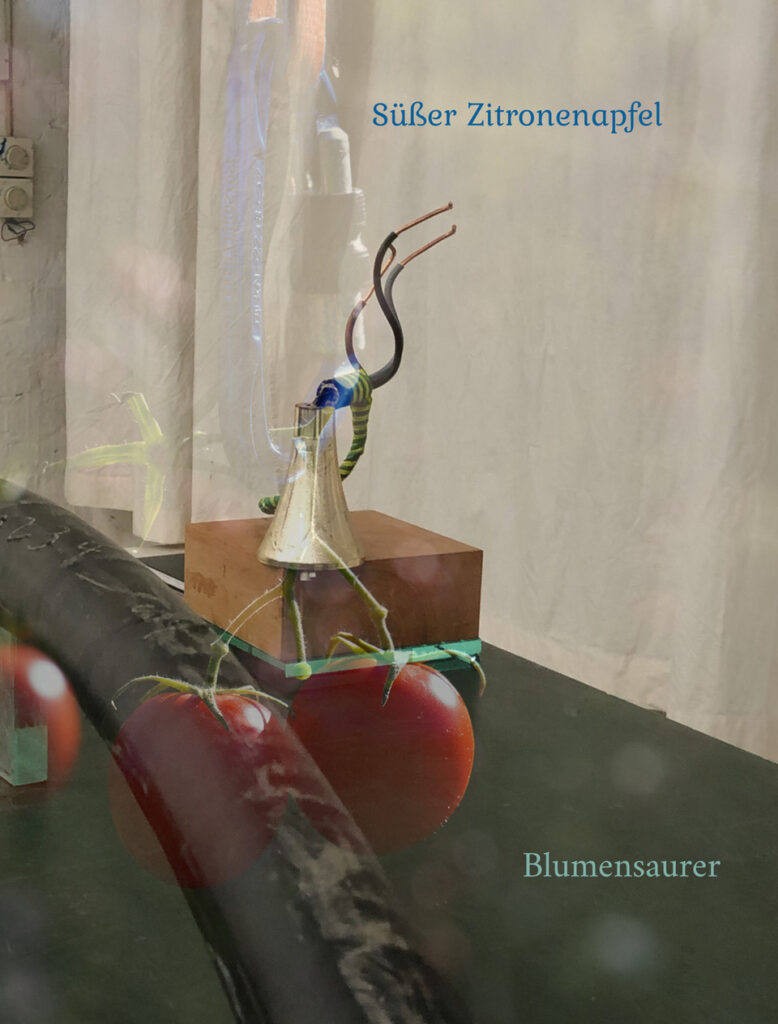
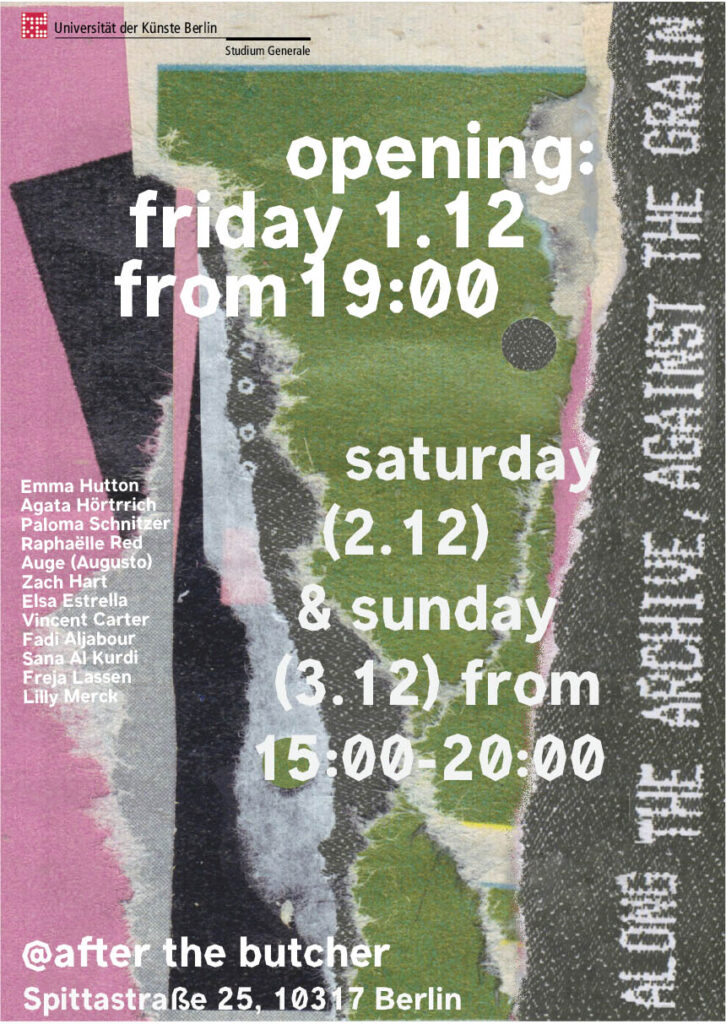
Opening Friday December 1 from 7pm
Exhibition open: Saturday Dec 2 and Sunday Dec 3 from 3-8pm
Along the Archive, Against the Grain
Can an archive be multiple, messy or intangible? In this exhibition, it’s in the water, the tree branch, the spatial matter. Archiving happens in sound, or silence, inside and outside our bodies. It speaks of violence, of surveillance or of resilience. And rather than claiming objective truths, the show asks what an embodied, or sensitive, approach to the practice of archiving might look like.
Each of the works activates the archive in a different way. Like chemicals, archives take on meaning in communication; at least they require excavating, being brought to light. In this sense, along the Archive, against the Grain explores individual relationships to the archive as a site of study, memory and resistance.
The exhibition arises from a collective inquiry carried out during the seminar “FILMS, ARCHIVES + IMAGINATIONS. Filmic Research in Collaboration” by Anna Lauenstein and Leon Vatter at Studium Generale, University of the Arts Berlin.
along the Archive, against the Grain presents works by Fadi Aljabour, Sana Al Kurdi, Auge, Vincent Carter, Elsa Estrella, Zach Hart, Agata Hörttrich, Emma Hutton, Freja Lassen, Lilly Merck, Raphaëlle Red and Paloma Schnitzer.
Tutors of the seminar: Lena Kocutar + Teresa Hoffmann
The seminar was supported by “Freiraum 2022/23 – Stiftung Innovation in der Hochschullehre”
Thanks to Flóra Tálasi (Studium Generale, UdK)
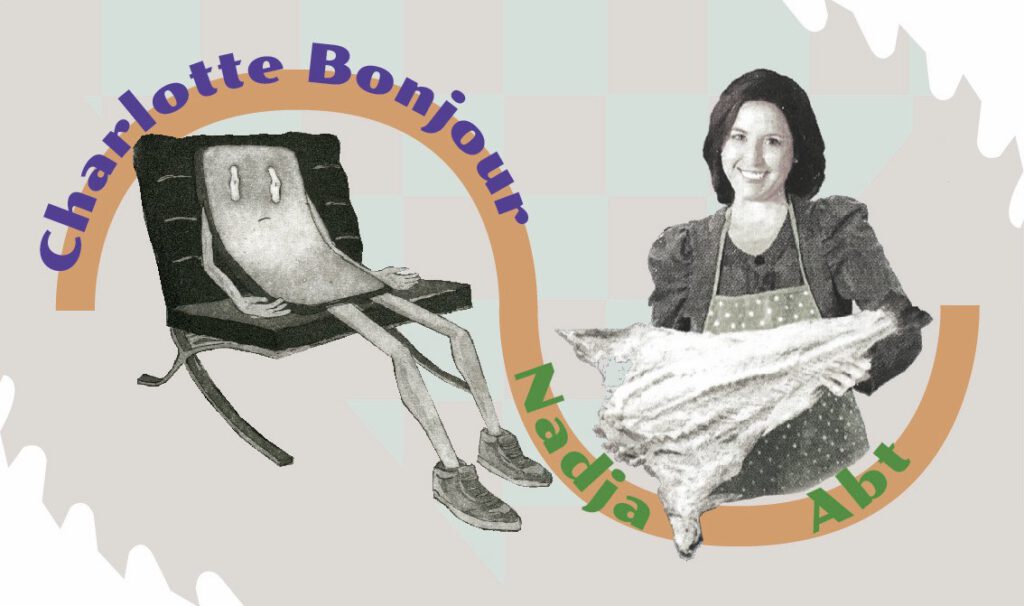
Opening: Friday 28 October, from 7pm
Exhibition: 29 October – 26 November 2023
open by appointment on: 01783298 106
or: mailto@after-the-butcher.de
In their duo exhibition Charlotte Bonjour and Nadja Abt present works from the last 2 years. Both artists start from stories, which are used as material for collages: In Charlotte Bonjour’s works, we follow anxiety-ridden cell phones into a surreal universe. During her time in Portugal, Nadja Abt created a sea woman who fights against the patriarchal systems surrounding her.
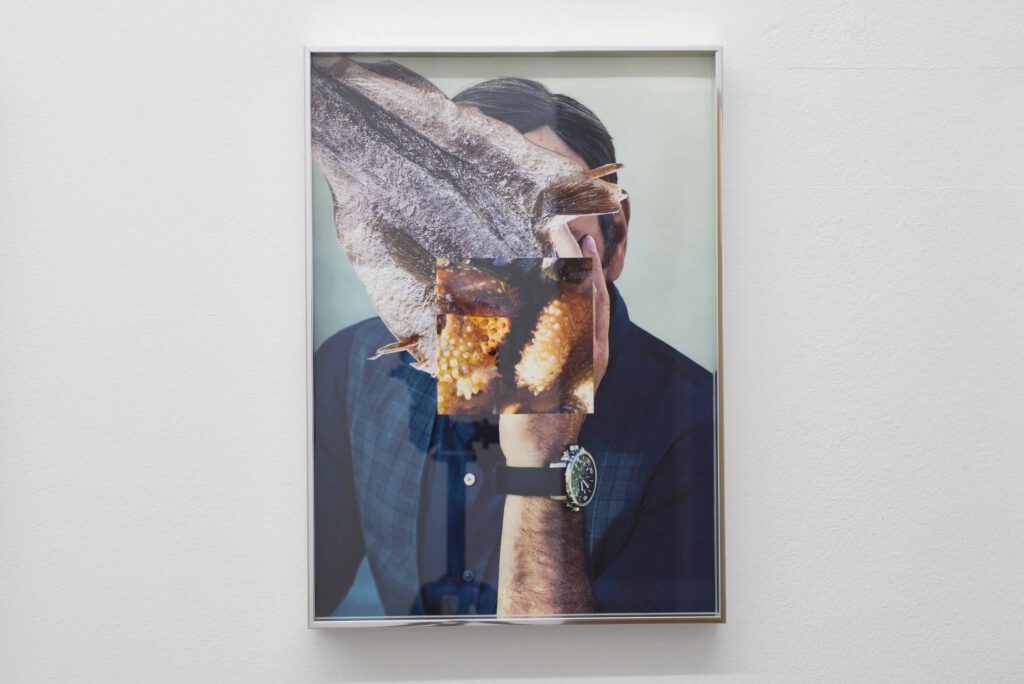
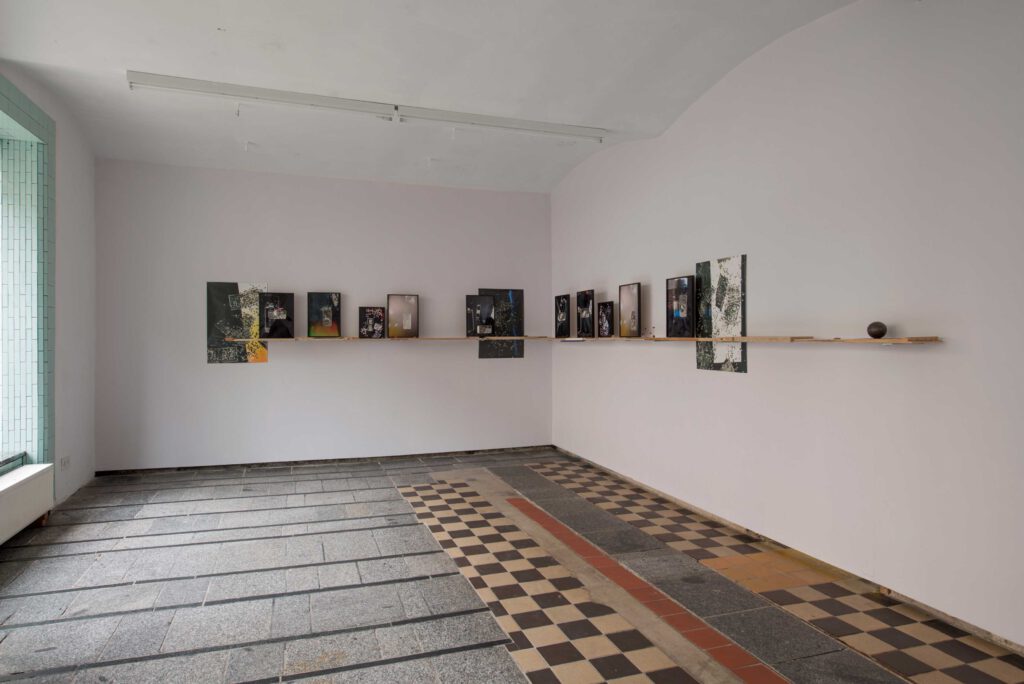
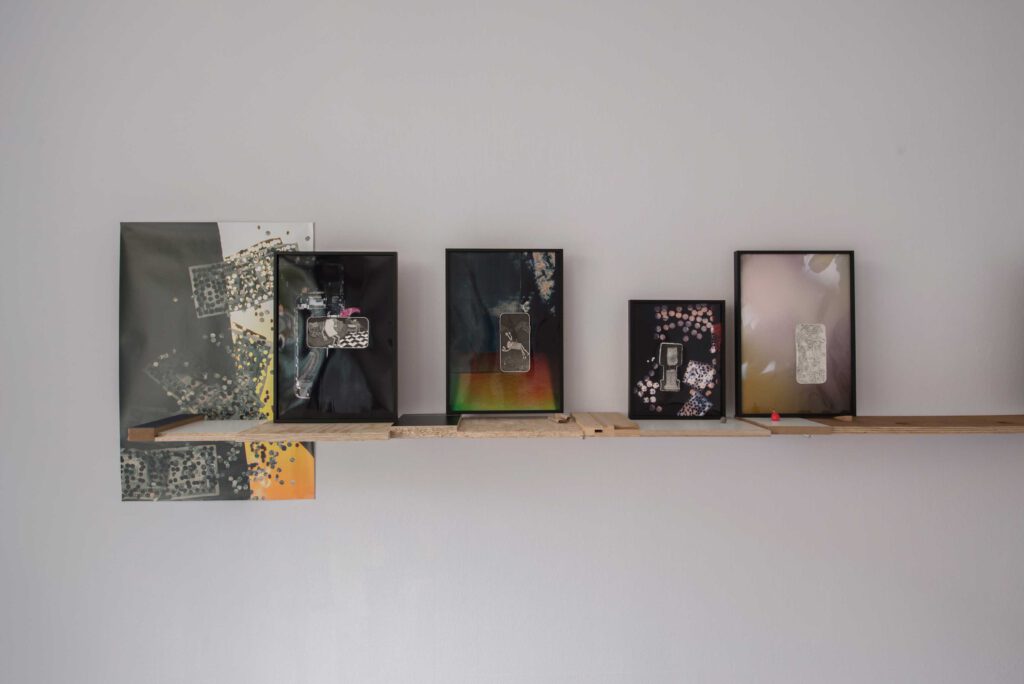
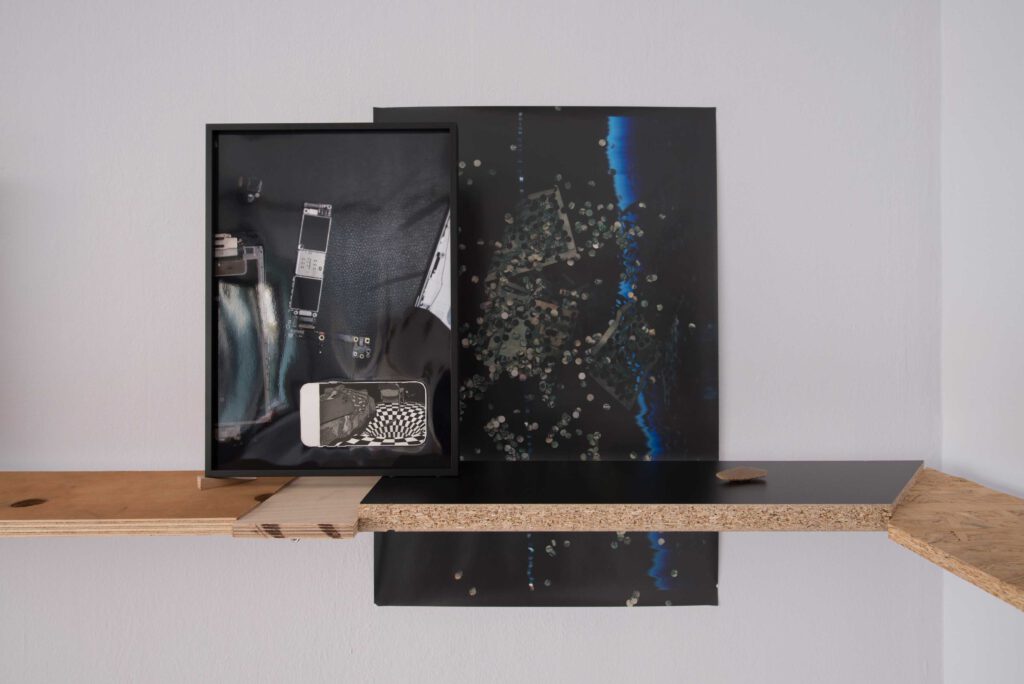
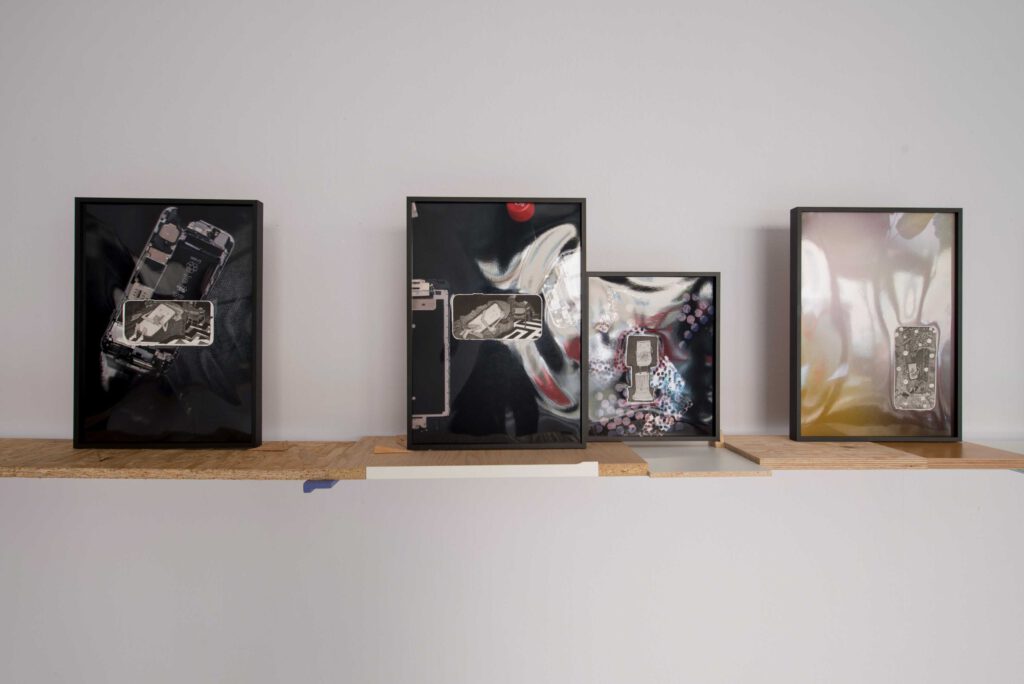
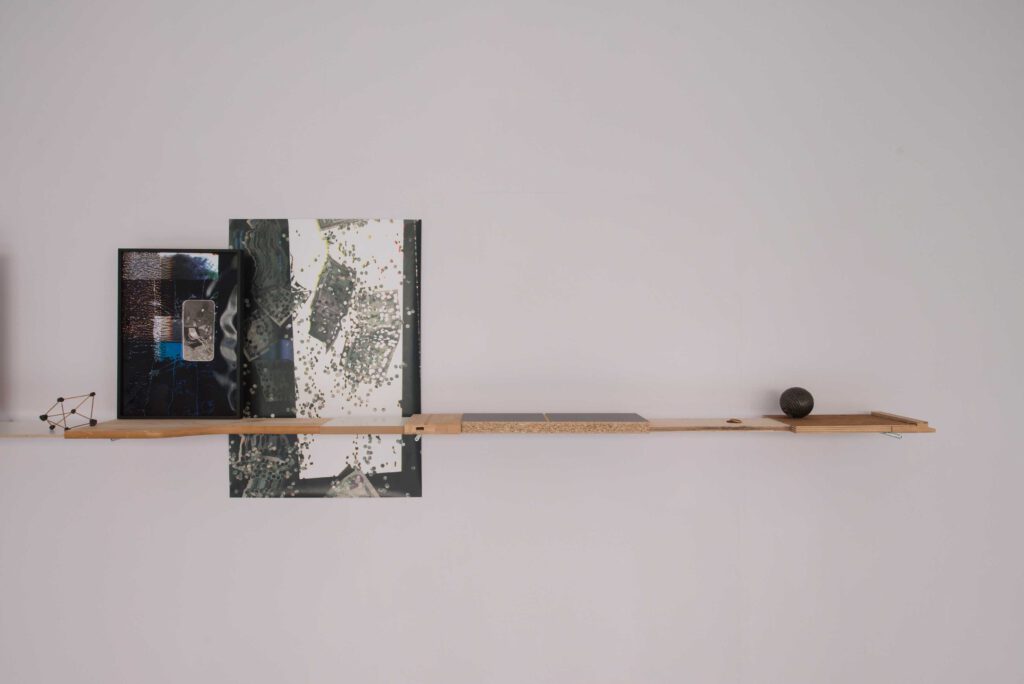
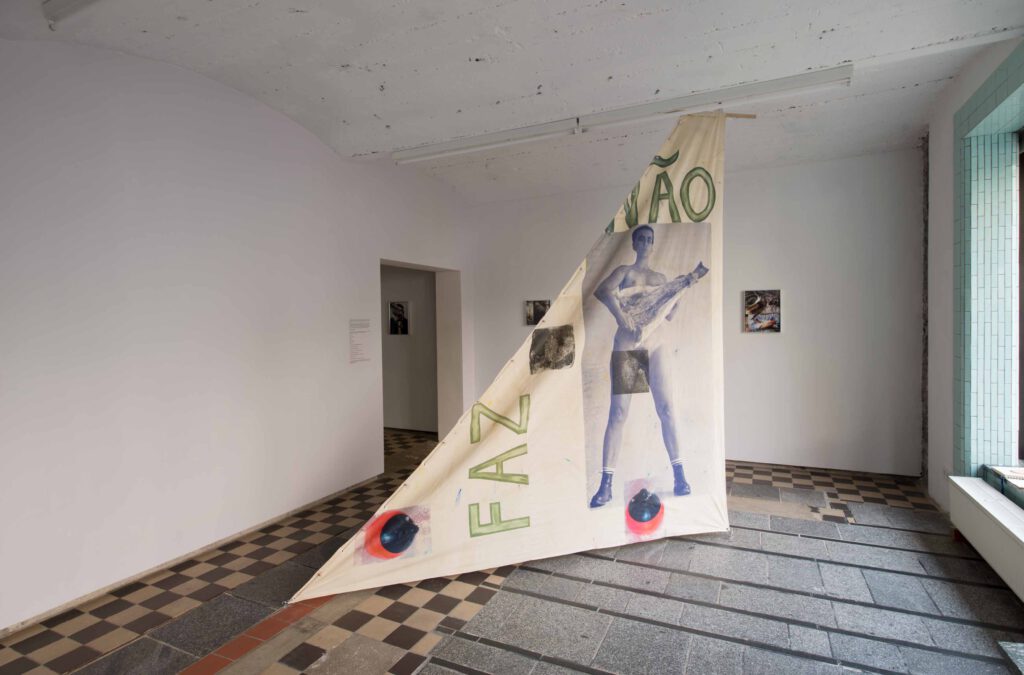
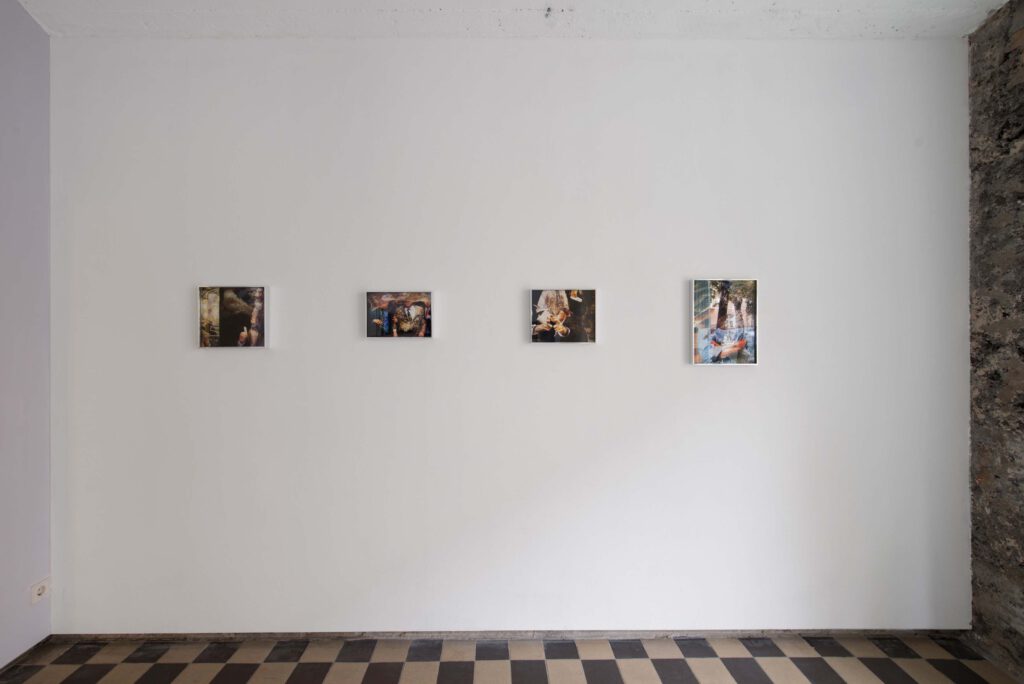
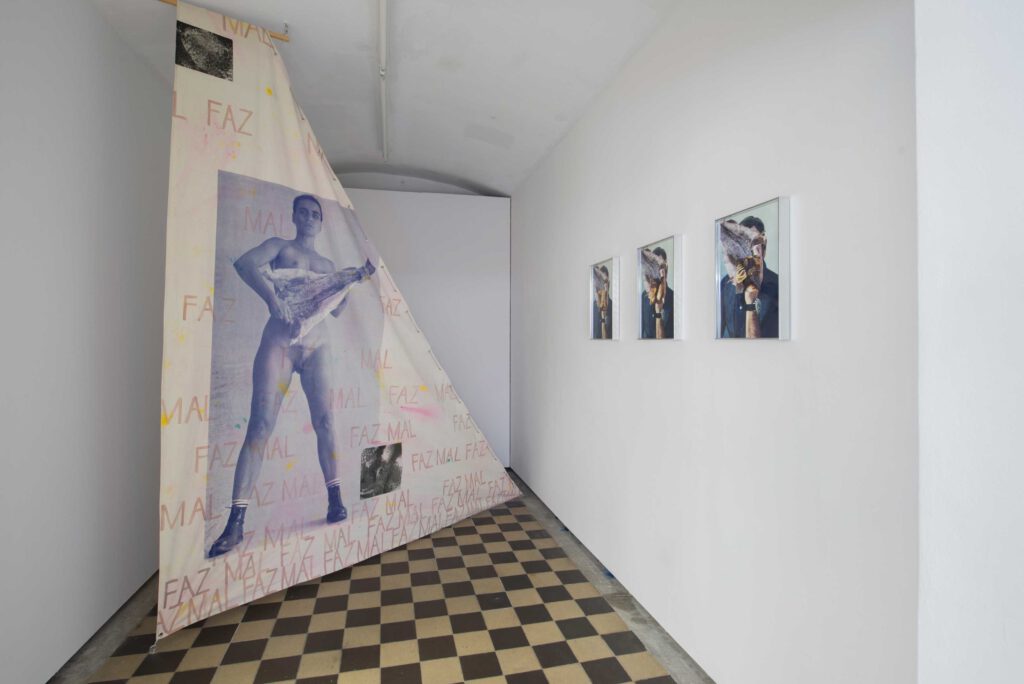
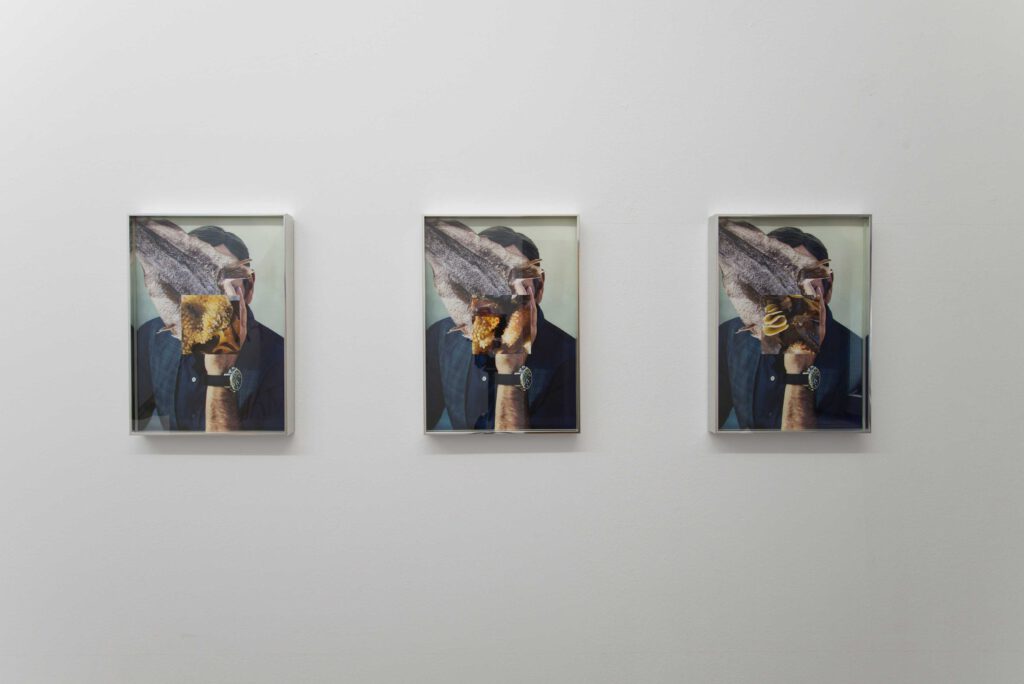
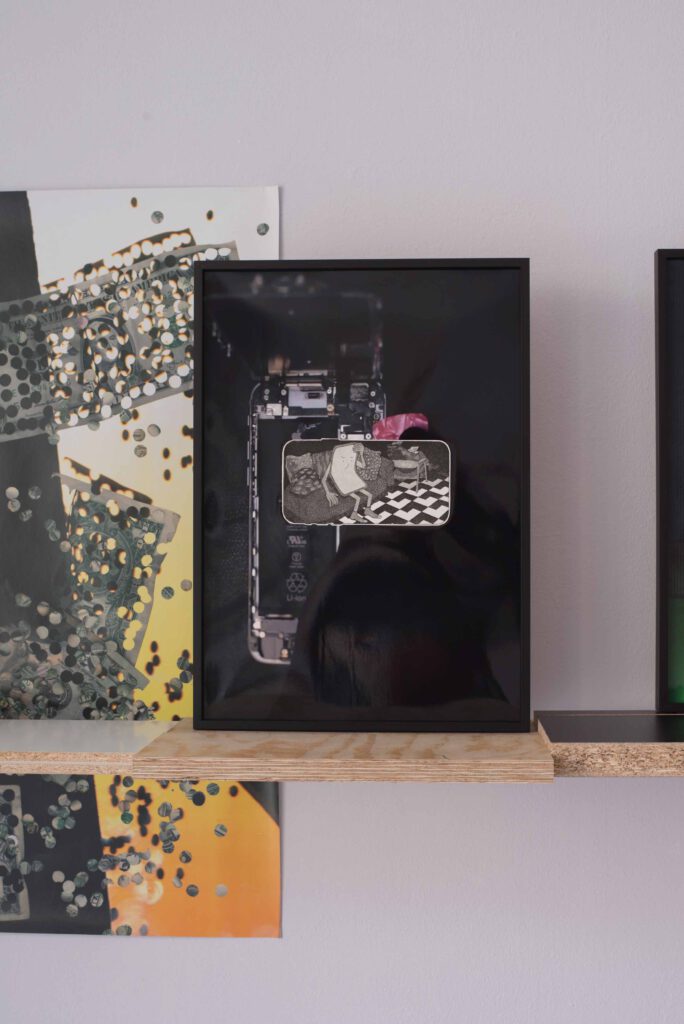
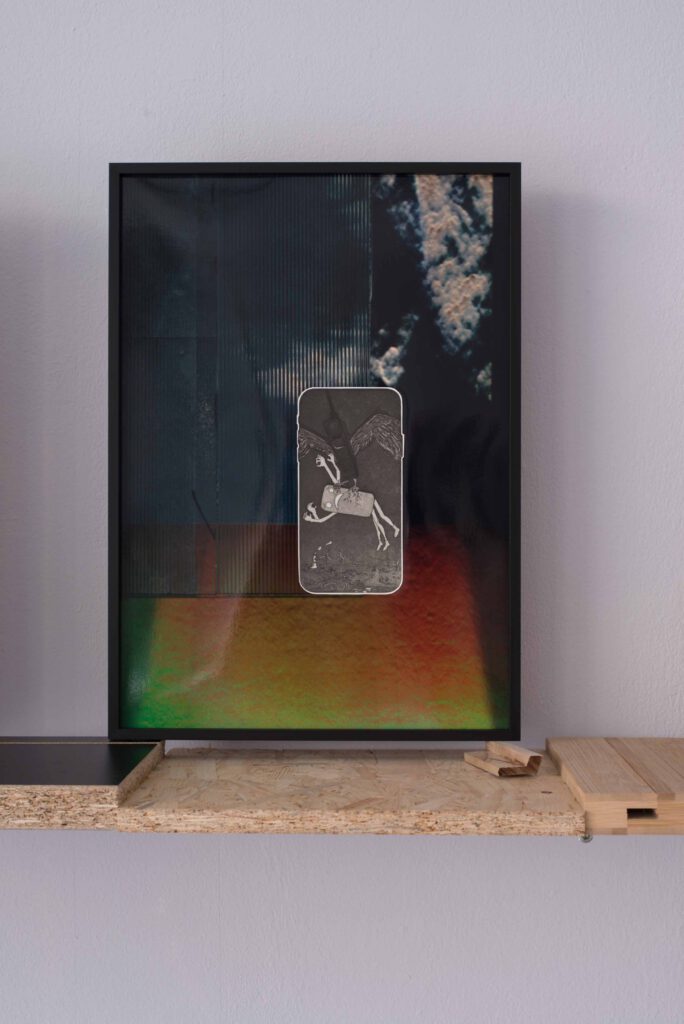
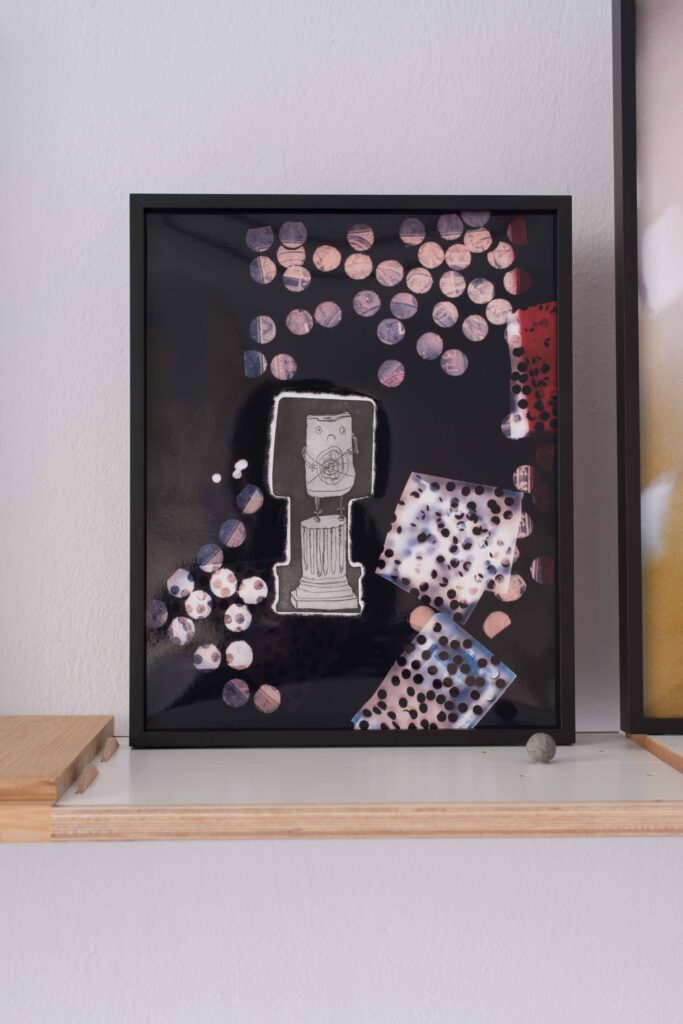
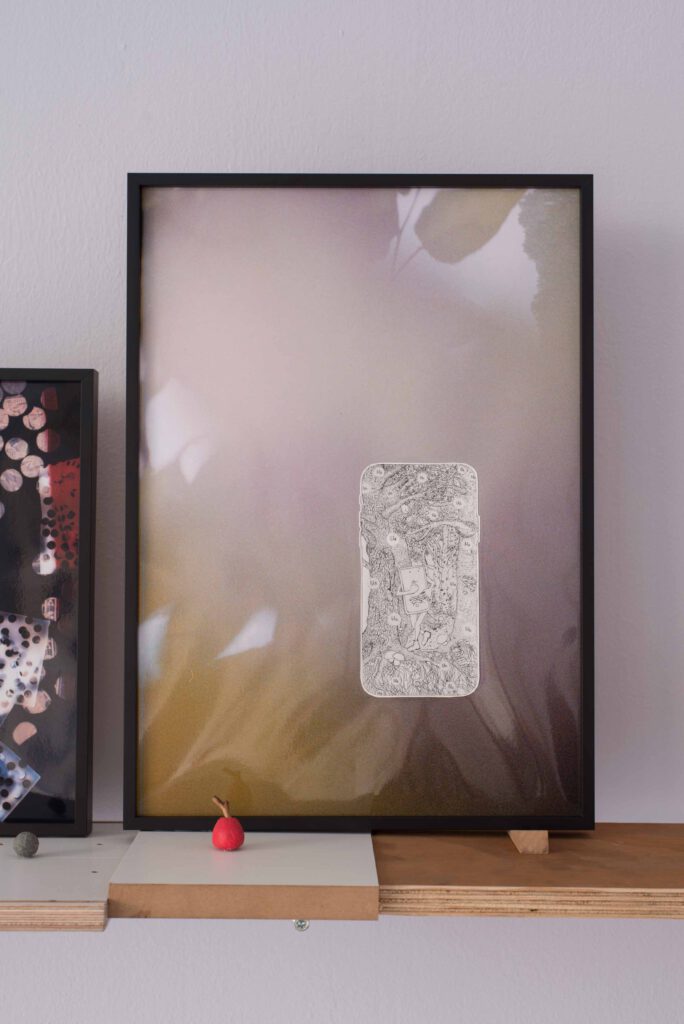
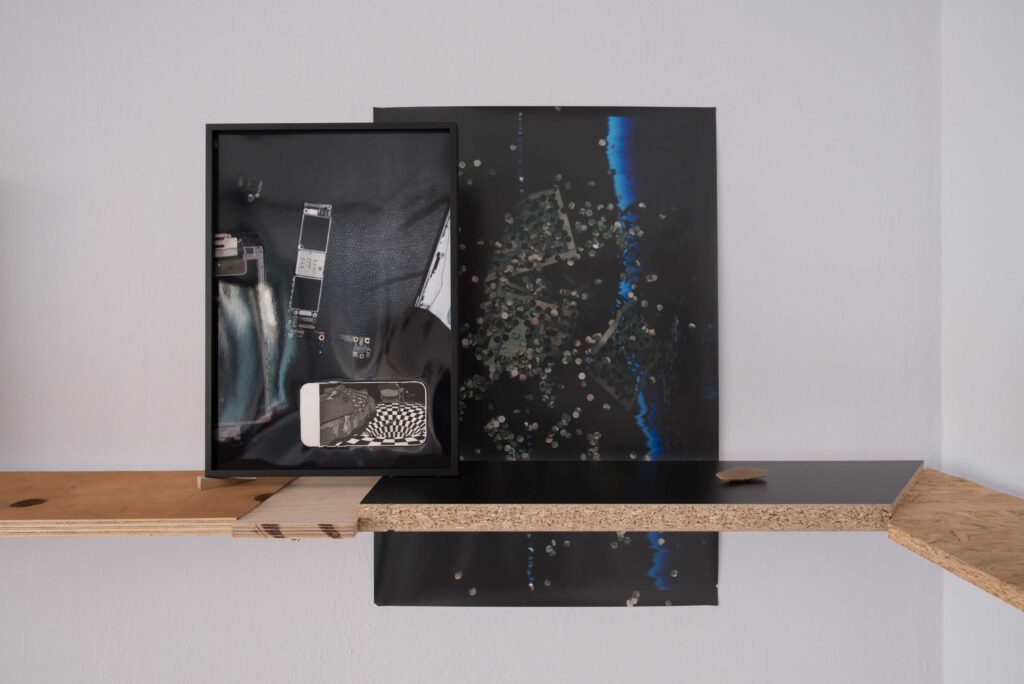
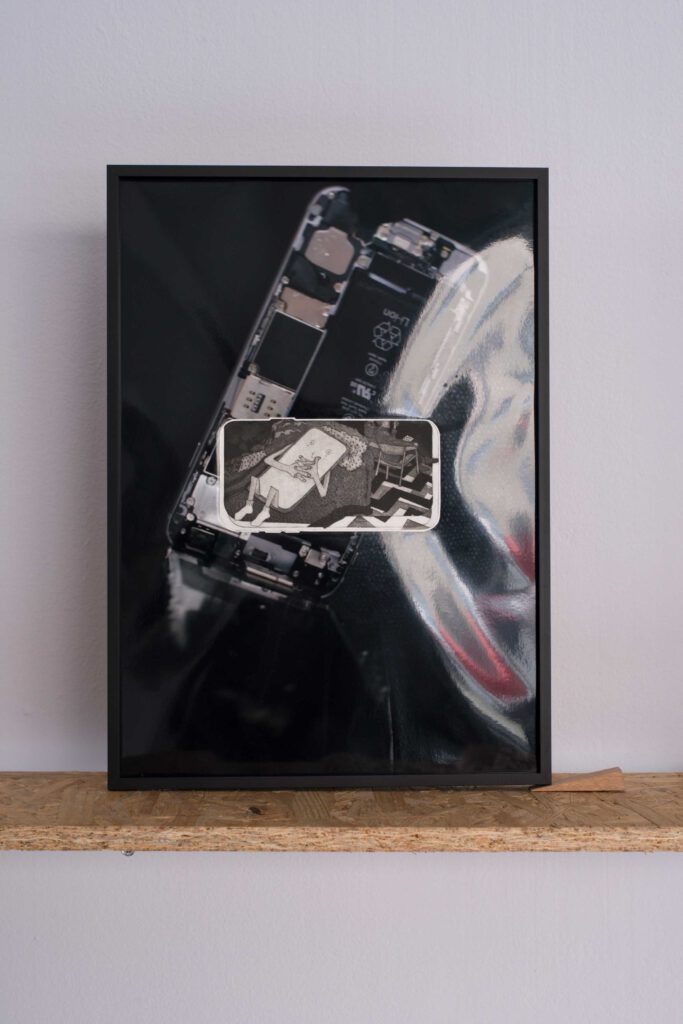
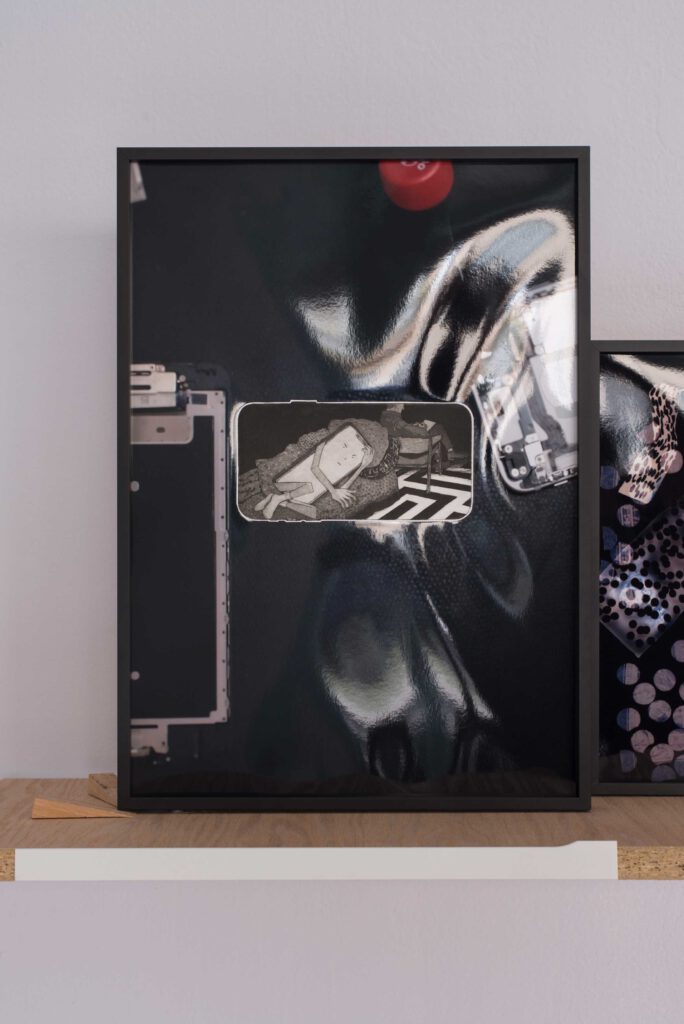
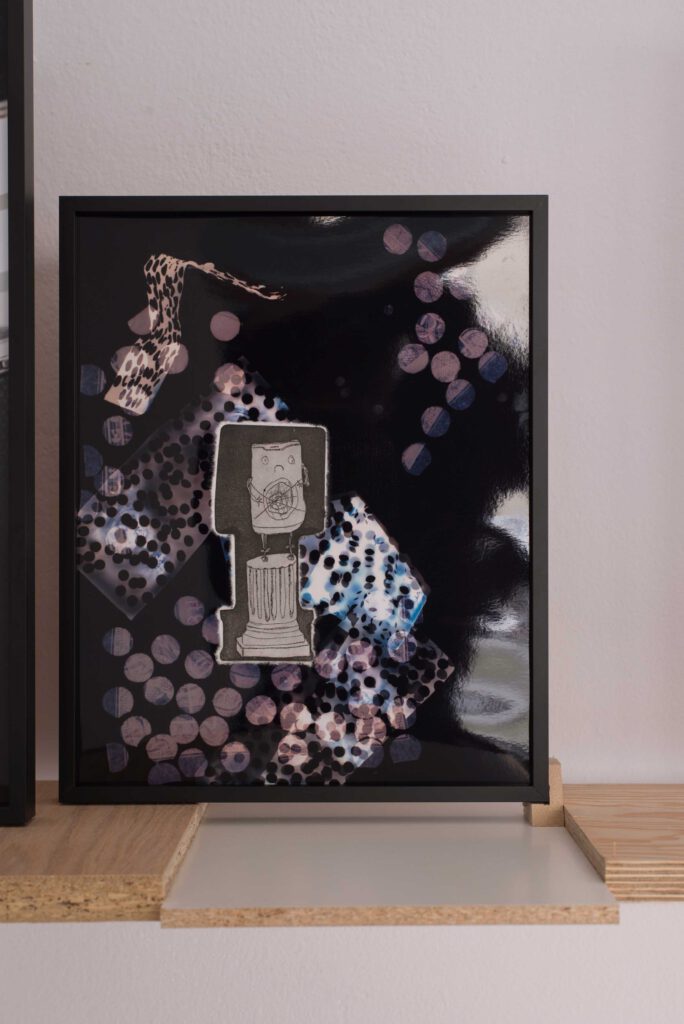
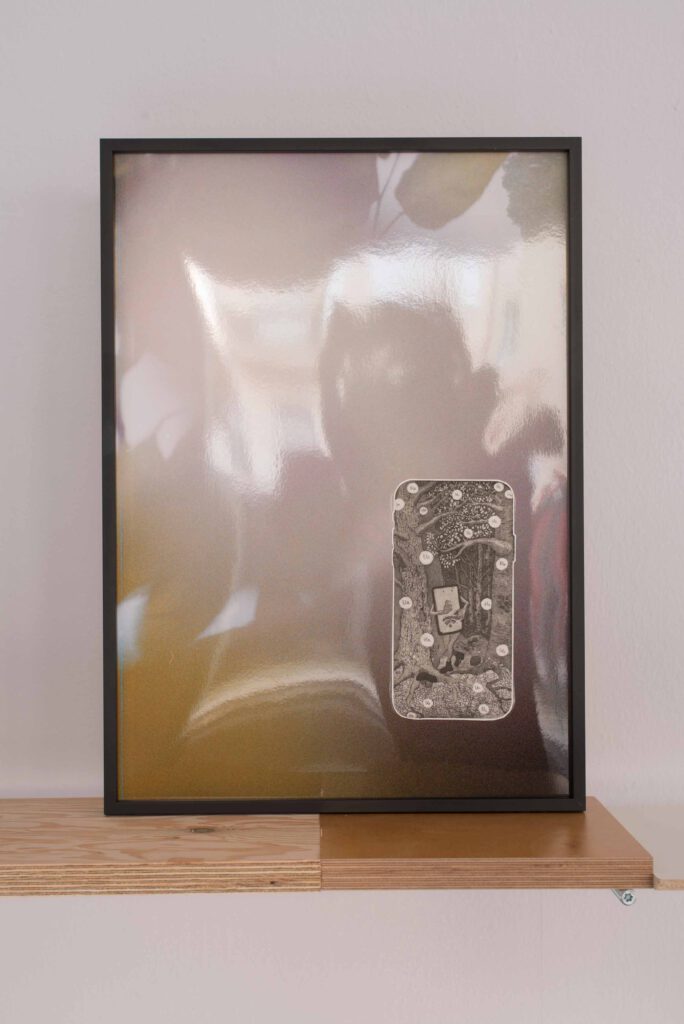
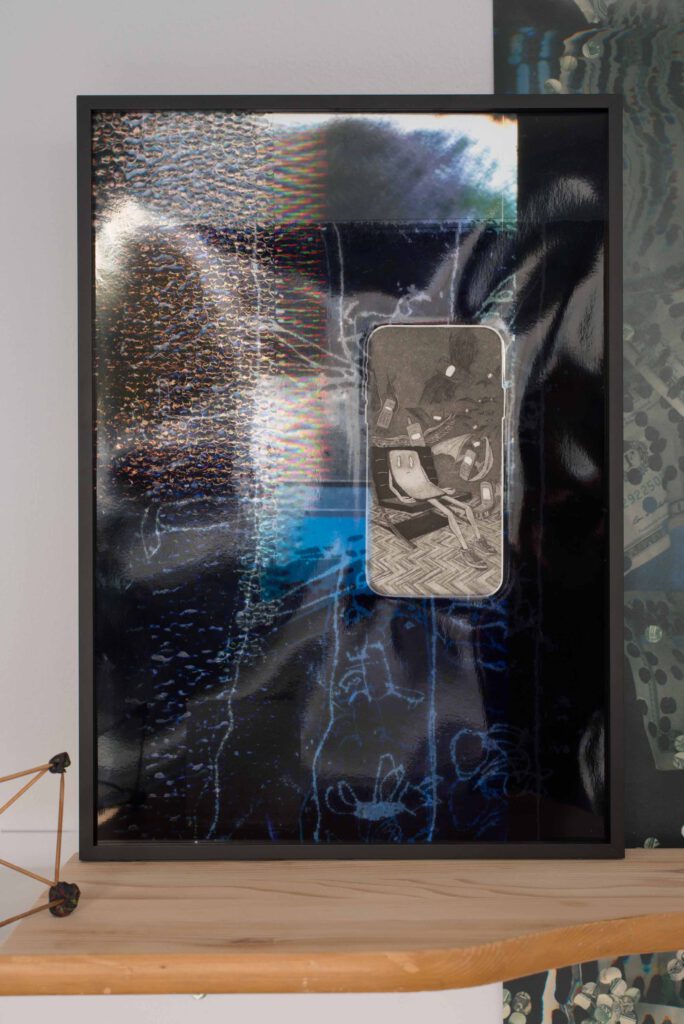
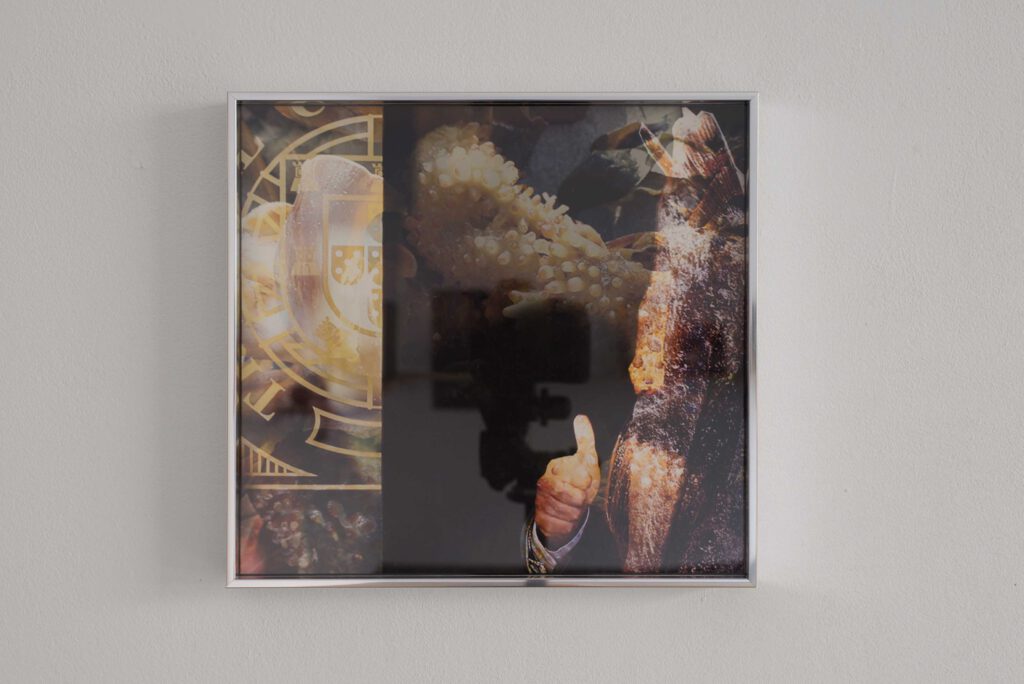
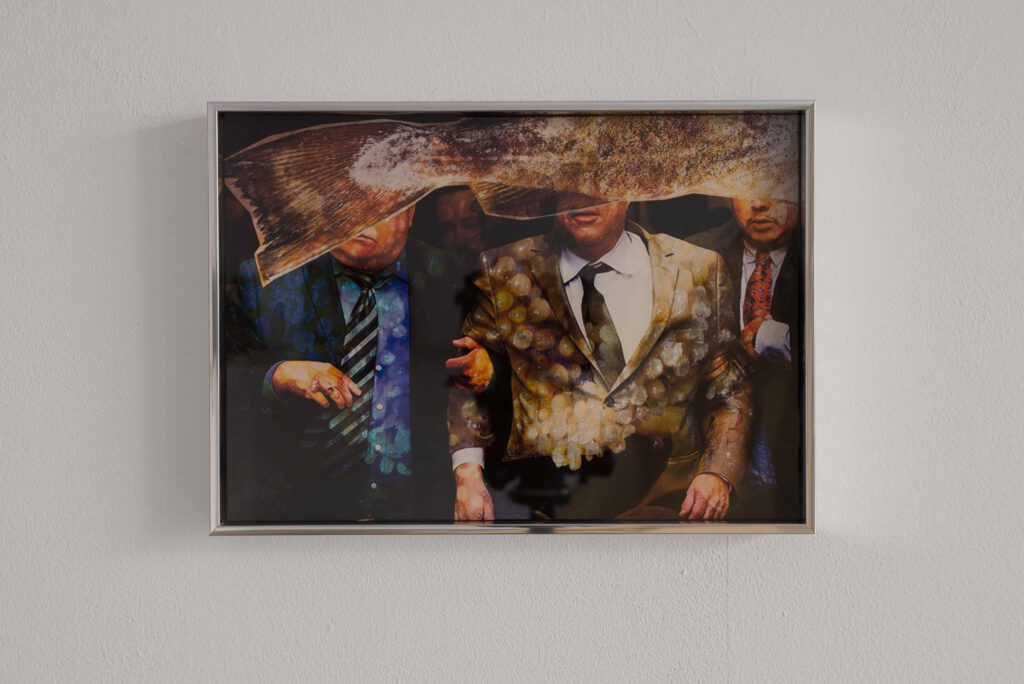
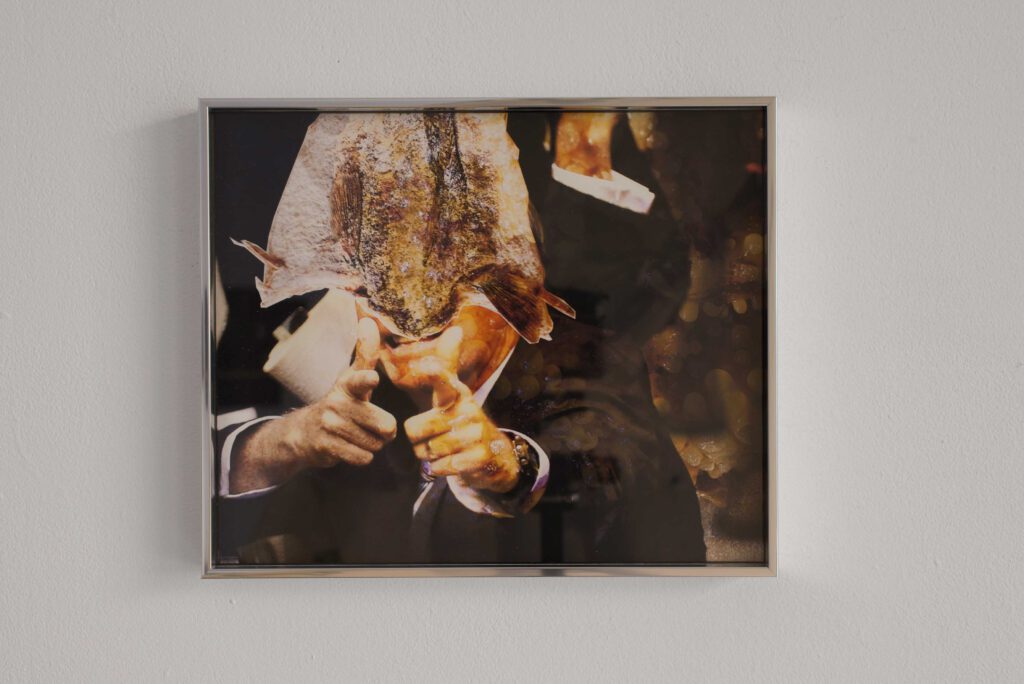
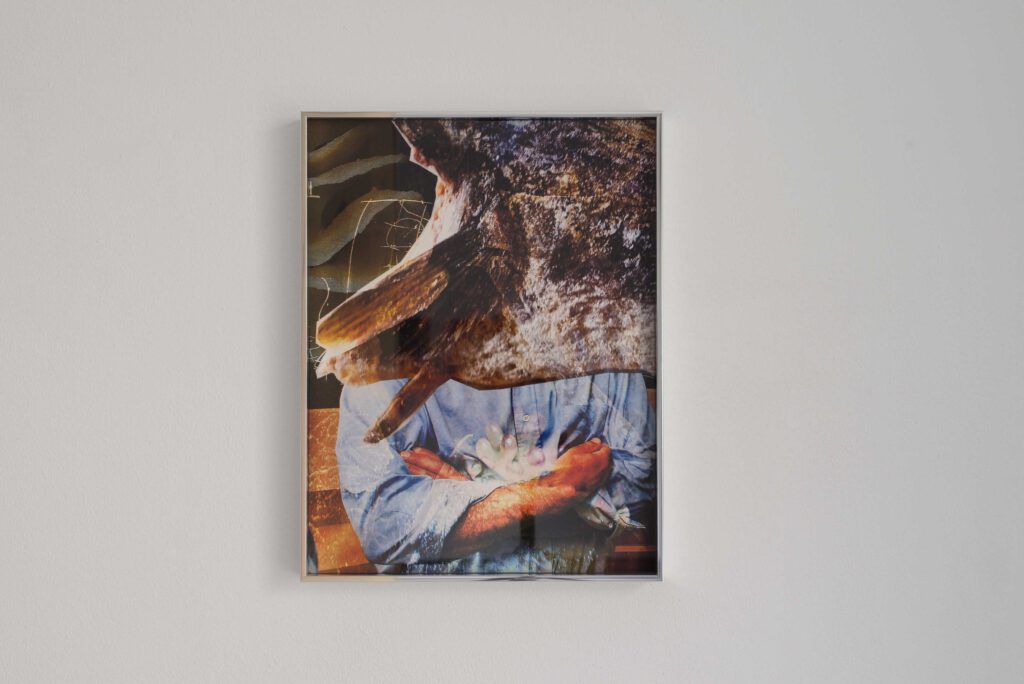
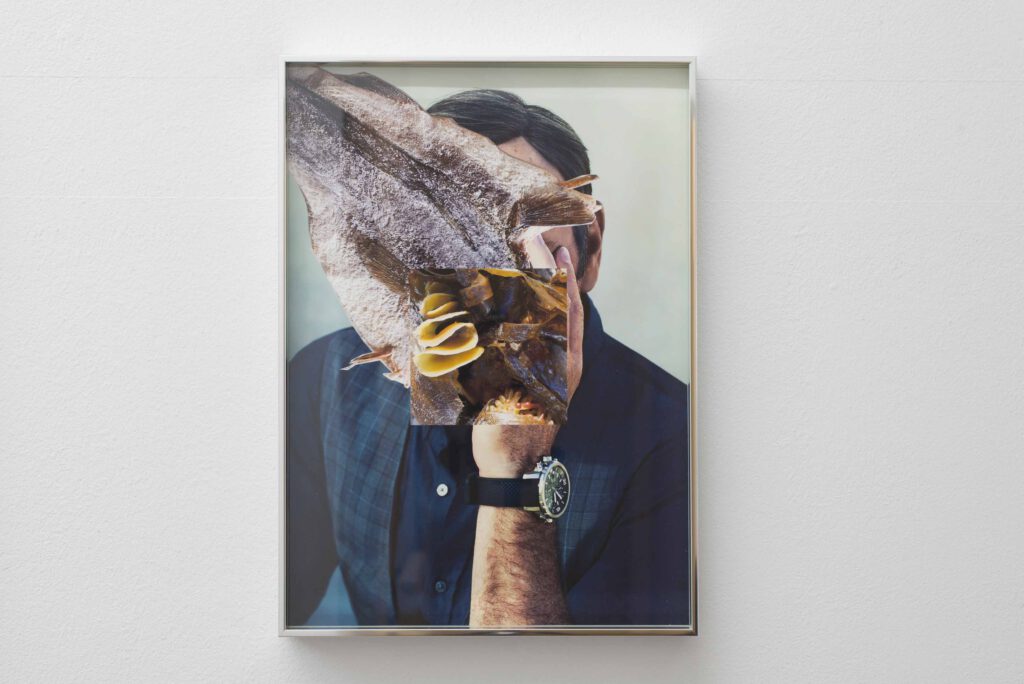
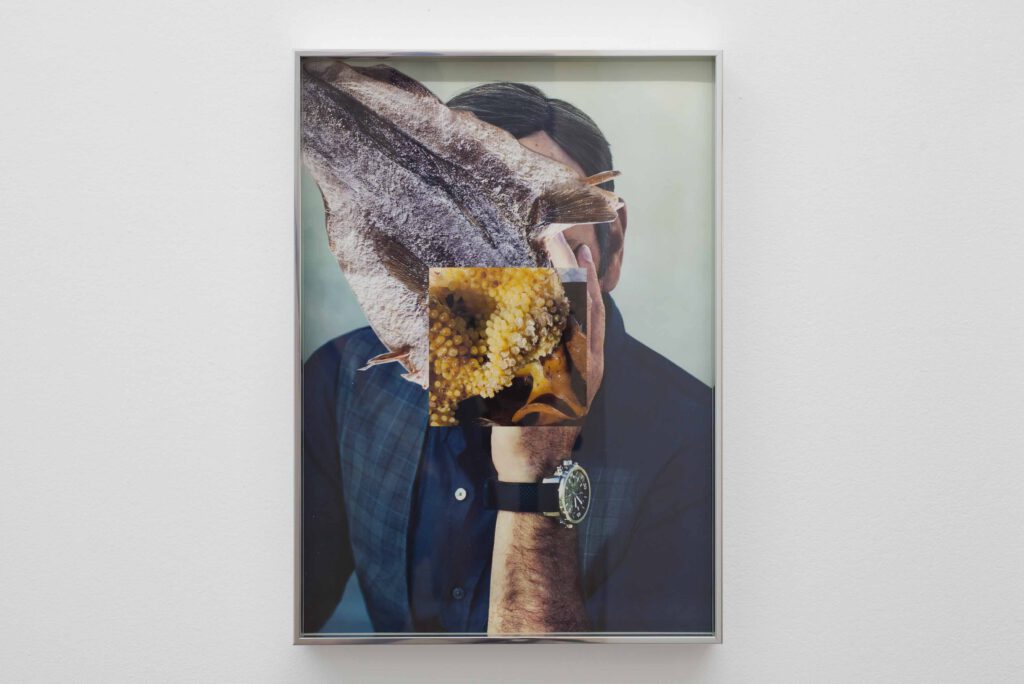
after the butcher – showroom for contemporary art and social issues cordially invites you to the finissage of the exhibition
What are all the cornflowers in the world against a Berlin blue factory?
Johanna and Helmut Kandl
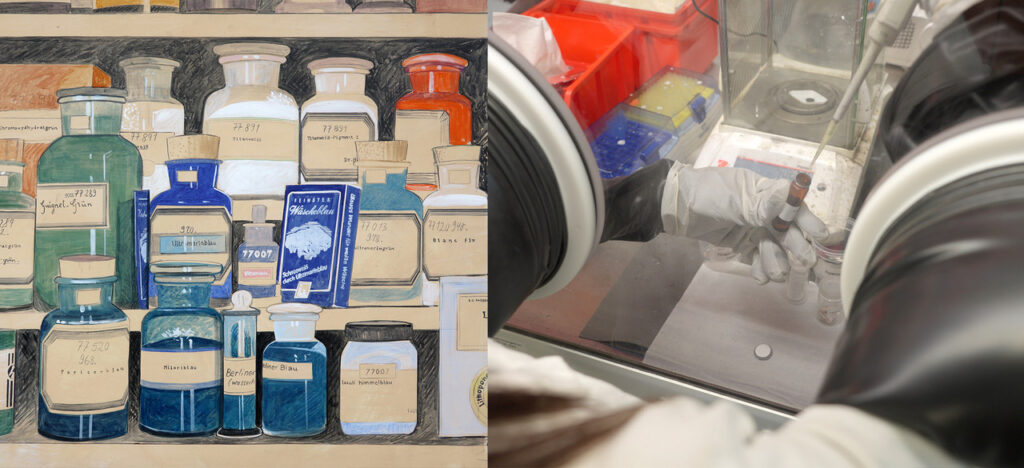
22 October 3-7 p.m.
from 5 p.m.: Lecture: Sodium-ion batteries, switchable glasses and modern medical technology: What else Berlin blue can do! by Dr. Alexander Kraft, chemist and chemical historian, followed by a discussion.
contact: 0178 3298 107 or mailto@after-the-butcher.de
Johanna und Helmut Kandl
With works by Arne Hector, Beate Schachinger and Emil Tomasev
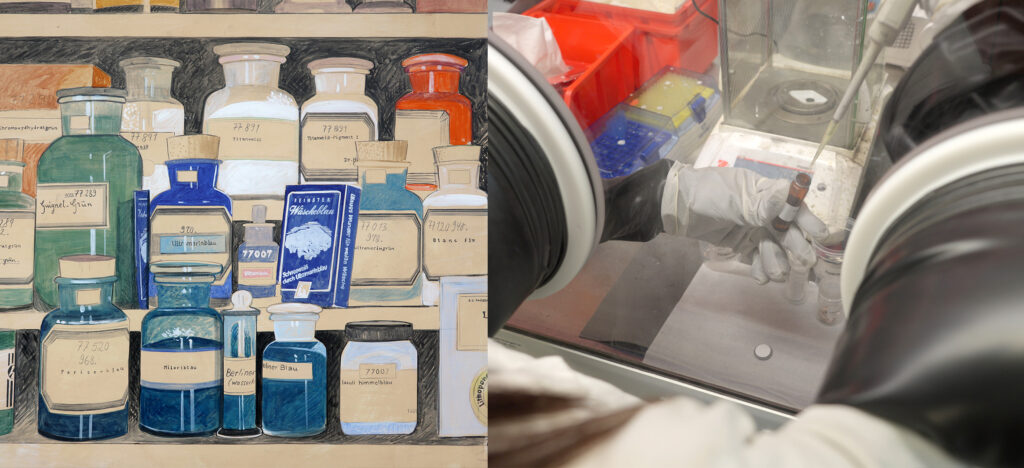
Opening: September 22 from 7pm
Exhibition September 23 – October 22, 2023
open on Saturdays 2-7pm
and by appointment: 0178 3298 106 or mailto@after-the-butcher.de
Press Release: